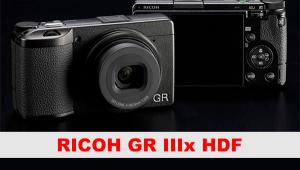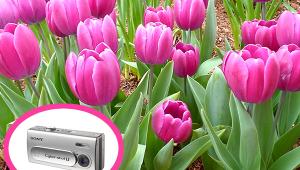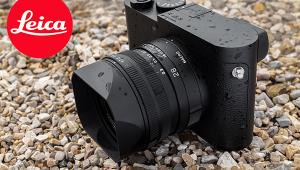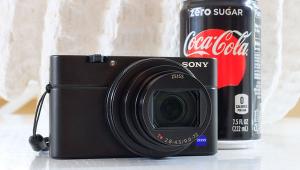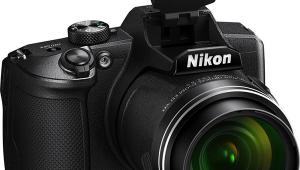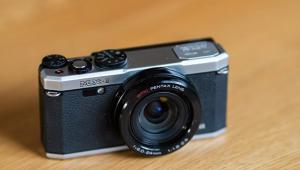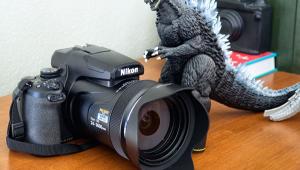Canon’s PowerShot G9; It Takes More Than Megapixels To Make A “Serious” Point-And-Shoot Camera
With its 12.1-megapixel sensor, Raw and Raw+JPEG Capture modes, 6x (35-210mm equivalent f/2.8-4.8) zoom lens with Optical Image Stabilizer, real image optical zoom finder, 3" LCD, and dedicated hot shoe, the top-of-the-line Canon PowerShot G9 definitely has the street creds of a high-performance, pro-caliber compact, which is why we're reviewing it here in Shutterbug. But this latest incarnation of Canon's enthusiast-aimed G-series is a lot more than just a collection of high-tech goodies--it's a beautifully integrated package that provides sophisticated control options, including a robust range of exposure and focusing adjustments, along with a level of imaging performance that says a lot about the quality of its fundamentals--the lens, sensor, and image processor.
 |
 |
The G9 has the visceral appeal of a fine piece of machinery. Its clean looking, comfortably contoured, reasonably compact (4.2x2.8x1.7", WxHxD) cast aluminum body is finished in subtly textured black (Canon calls this laser-applied finish a "leather tone coating"). And while it's hardly a heavyweight at 11.3 oz sans battery and SD memory card, it has a satisfying heft. The G9 also looks like a traditional camera with its knurled, top-mounted ISO and Exposure mode dials, the knurled lens surround on the front, and efficient SLR-style function setting array on the back. In the classic ad-speak of Canon's press release, the G9 is characterized as a "retro-hip design." Fortunately, function has not been sacrificed to hipness--all the controls and dials are very clearly marked, logical, and (in most cases) intuitive. The result is a camera that, in many ways, combines the precise control of a D-SLR with the pleasantly casual shooting experience of a point-and-shoot.
A Thinking Photographer's Point-And-Shoot
Rather than go through its myriad modes and features, let's concentrate
on those elements that set the G9 apart as a thinking photographer's point-and-shoot.
The first is an intuitive and convenient manual exposure system. Set the mode
dial to "M," turn the camera on and the initial display on the LCD
prompts you to press the +/- button above the control dial to change settings.
Pressing this button lets you toggle back and forth between the aperture and
shutter speed scales, the active one indicated by a pair of downward-pointing
green arrows showing which direction to turn the control dial--clockwise
to go up the scale, counterclockwise to select slower shutter speeds or wider
apertures. As soon as you turn the control dial, a horizontal reference scale
appears above the variable you've selected--a nice piece of graphics.
Press the * (star) button and you can see both aperture and shutter speed scales
at once.
 |
|
|
The actual metering index is a large, clear, vertical over/underexposure scale
on the right side of the LCD, covering a +/-2-top range in 1/3-stop increments.
To set the proper metered exposure, turn the control dial to center the dash
that moves up and down the right-hand side of the scale as you change settings.
Many top-tier point-and-shoots provide some way of setting the exposure manually,
but the comprehensive system in the G9 has clearly been engineered for actual
use, not as an emergency fallback mode.
Another useful feature found on the G9 that is, to say the least, uncommon in
this breed of camera is a real, honest-to-gosh, manual focusing system that's
easy to use and works in all modes with the exception of the auto pilot "green
zone" Autoexposure mode. For example, select P (Program) exposure, press
MF (it's the topmost setting on a four-way toggle switch ring inboard
of the control dial), and a big MF logo appears in the middle of the LCD. You
now have the option of following the prompt, pressing the +/- button and setting
exposure compensation. But if you ignore the prompt and simply turn the control
dial in either direction, the "MF" disappears and is replaced by
a magnified rectangle of what appears in the center of the frame along with
a vertical, bar-type distance read-out scale on the right. By turning the dial
you can select different focusing distances manually and see the sharpness of
the image in the focusing rectangle change in real time. As you focus to closer
or farther distances, the index on the scale automatically changes from feet
to inches or vice versa--pretty neat.
 |
|
|
- Log in or register to post comments
